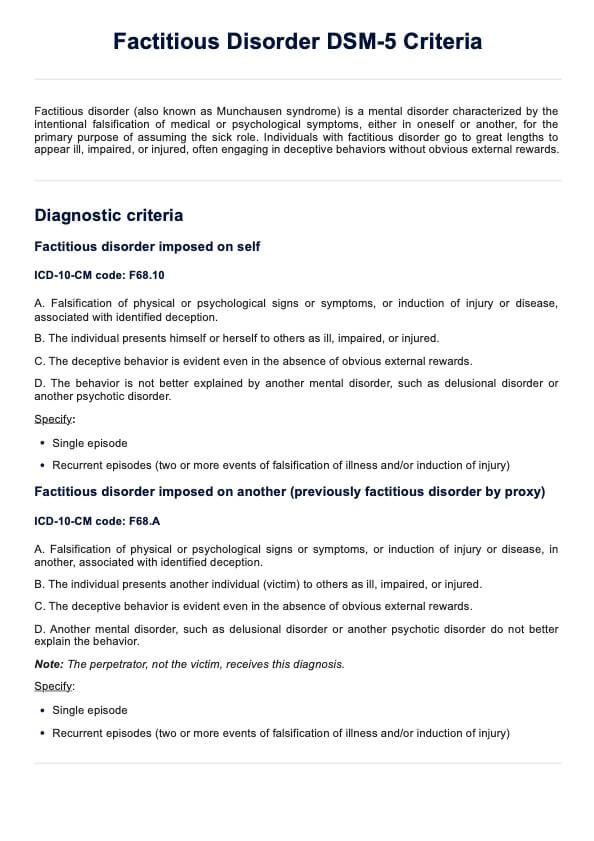Malingering involves the intentional production of false psychological or physical symptoms for external rewards, such as financial gain or avoiding work, while factitious disorder involves falsification of symptoms without obvious external incentives.

Factitious Disorder DSM-5 Criteria
Read our guide to learn more about the DSM-5 criteria for diagnosing factitious disorder, its symptoms, types, and treatment options.
Use Template
Factitious Disorder DSM-5 Criteria Template
Commonly asked questions
Assessment involves a thorough clinical evaluation, review of medical history, behavioral observations, psychological assessments, and differentiation from other conditions such as malingering or somatic symptom disorders.
Previously, DSM-IV identified three subtypes based on physical or psychological symptoms. However, DSM-5 recognizes two types: factitious disorder imposed on self and factitious disorder imposed on another.
EHR and practice management software
Get started for free
*No credit card required
Free
$0/usd
Unlimited clients
Telehealth
1GB of storage
Client portal text
Automated billing and online payments











